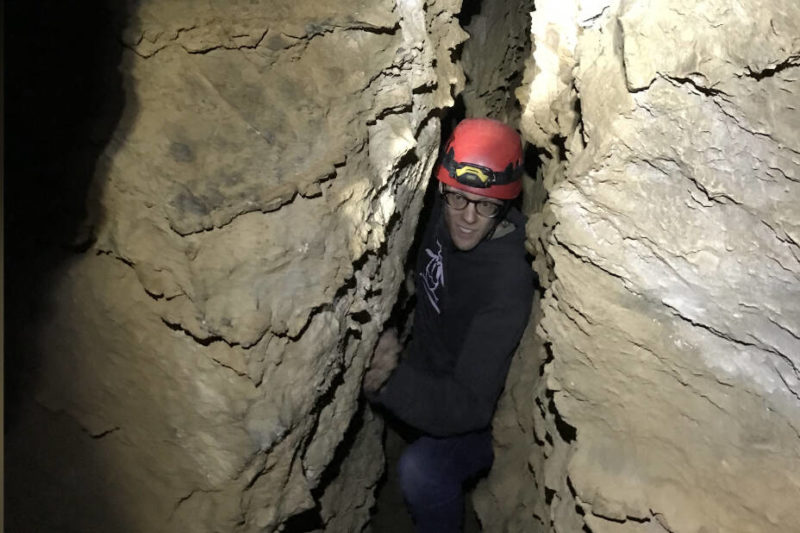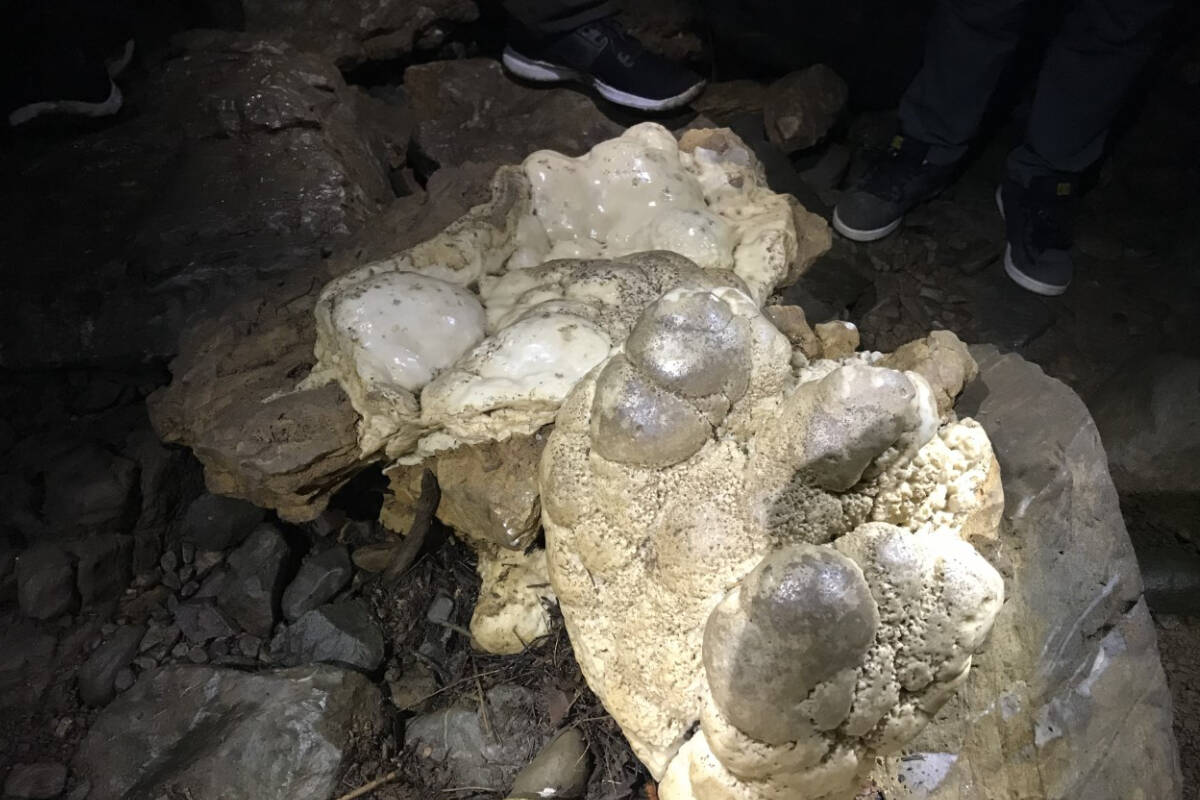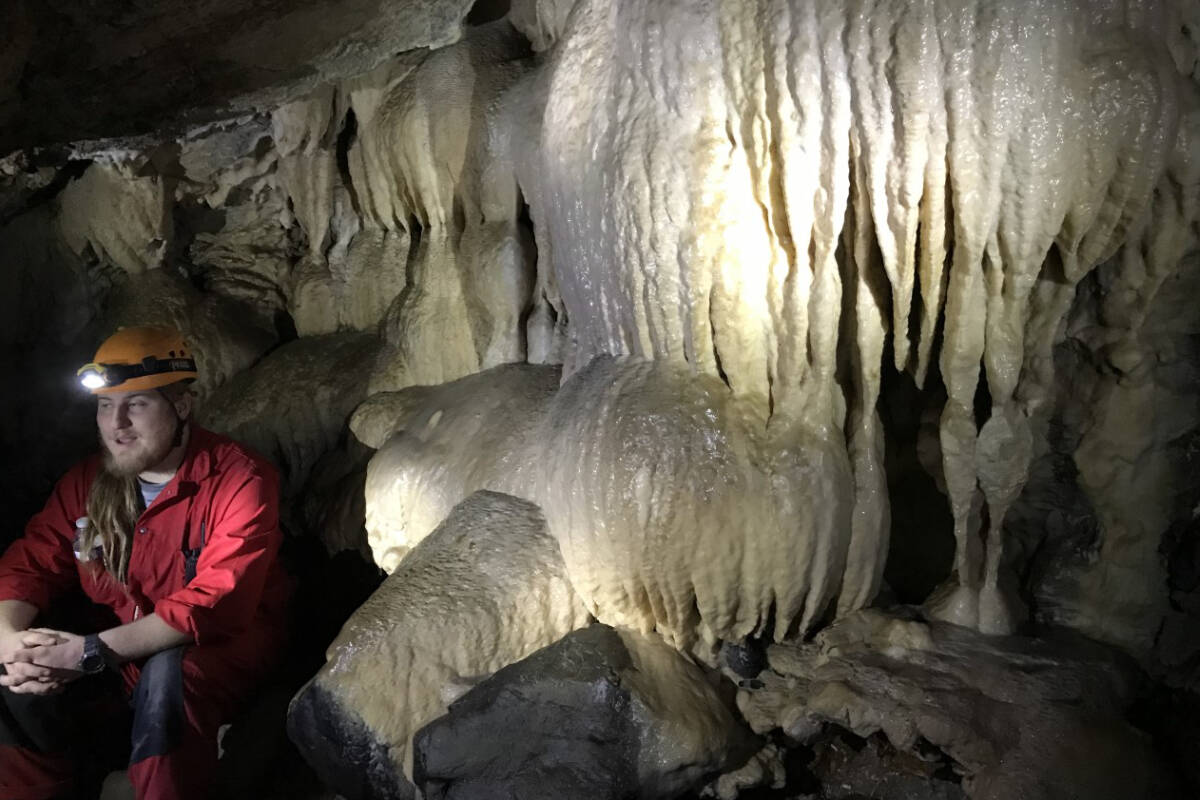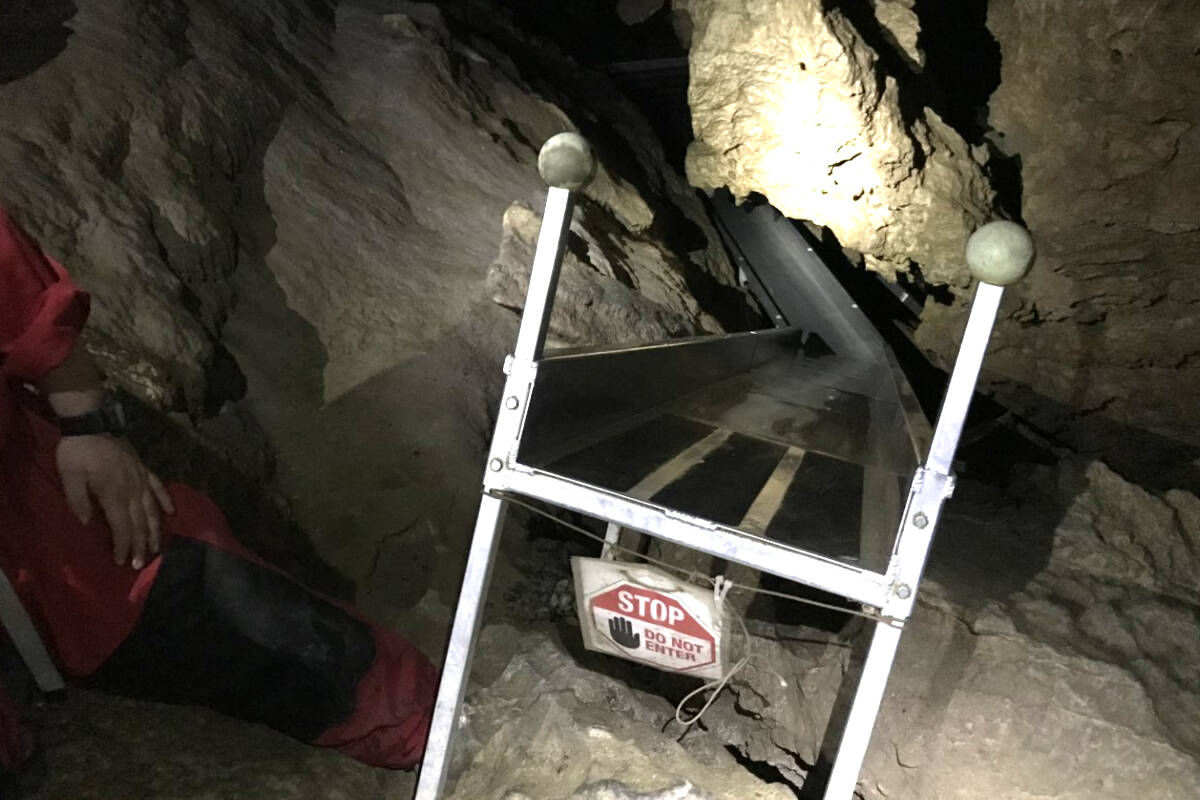Visiting the Horne Lake Caves has to be one of my most unique tourist experiences and it’s right in my own backyard.
There’s something to be said when you can combine geology, slides, a “sacrifice room,” climbing, a touch of claustrophobia and several minutes of total darkness into one outing.
The caves, located 26 kilometres west of Qualicum Beach, are natural formations, with no lighting, paved walkways or hand-railings. Inside are calcite crystal formations, fossils, large chambers and numerous places to climb over and squeeze through.
My tour explored both Riverbend Cave, which is 384 metres long, and the shorter Main Cave, at 136 metres long.
Our small group started off crossing a suspension bridge over the Qualicum River and taking a short but scenic hike, climbing a bit to reach Riverbend Cave, which takes about one hour and 45 minutes to traverse.
READ MORE: Couple restores abandoned Grand Forks gold mine to share mine experience
We descended metal stairs to the cave’s gated-off entrance, and into into our subterranean mini-adventure. I was lucky enough to have T.J. and Chloe as guides, plus the holidaying Forsyth family (no relation we’re aware of).
One of the first things I learned was do not touch the calcite formations, as tempting as it might be. They look like huge, melted marshmallows. Sadly, they can – and many have – be easily damaged by the oils in our skin. It takes an enormous amount of time for them to recover, so they’re off limits.
Which brings me to the “Sacrifice Room.”
I was relieved to learn this room is sacrificial in that it’s home to a large chunk of calcite that we were allowed to touch.
Once we all got that out of our system, we were on our way.
I think one of the best things about the experience is you get a glimpse of danger, but deep down you know you’re fine. I found myself squeezing through narrow, rocky corridors, guided only by my helmet-mounted light.
I have to admit that I was more than happy to stick toward the back of the group whenever I had the opportunity, dodging cave crickets from time to time (OK not really, but I saw one and it was pretty big, though far from the biggest my guides had seen.)
The part that most tested my level of comfort was several minutes of total darkness. We all gathered in small alcove, sat down and turned off our headlamps. Now there’s darkness and then there’s total darkness, as in you can’t see your hand in front of your face. Well, it depends. Some people see nothing, while other brains will create a phantom hand in front of their eyes.
Enough time in total darkness can even bring on real hallucinations (beyond the phantom hand), as the brain grapples with a lack of visual stimuli. Fortunately it takes hours, and not minutes for this to happen.
This is probably a good time for me to point out that if a person is uncomfortable, they were welcome to turn on their headlamp (preferably not directly into anyone’s eyes).
Similarly, there are a range of options to make your way through, including tighter spaces or less intimidating alternatives.
We even got a mini science lesson, as T.J. demonstrated a process known as triboluminescence by rubbing two quartz crystals together, creating energy with the friction.
I enjoyed checking out the caves’ many stalagmites and stalactites, mineral formations that form from the floors and ceilings of a cave.
We parted ways with the Forsyth family at this point and T.J., Chloe and I headed to Main Cave, a short hike away.
A number of these aforementioned mineral mounds, plus calcite formations, were destroyed in the park’s Main Cave, right after it was gated-off in the 1980s. It’s a mystery how this person, who also spray-painted several parts of the cave, was able to enter, but I guess it’s not a big surprise — sometimes people stink.
There’s a little more adventuring to be done, including climbing up a small waterfall (it was dry when I visited), then venturing through a tunnel, while following a few signs and my guides’ instructions.
There’s also a cave slide, which looks a bit intimidating, though it’s actually quite slow, depending on how frictious your clothing is.
T.J. is a master at propelling himself down it, but of course he’s had lots of practice.
My first-ever spelunking experience ended with a squeeze through a narrow gap. When I looked at the gap, I was skeptical I would fit, but my guides assured me much larger folks had managed to squeeze through, so I would be fine. It’s a good spot for a photo op, too.
I’d recommend a rain jacket, or other waterproof clothing, plus some footwear with a good grip and gloves, when you visit the caves. Dress in layers and wear clothing you don’t mind getting a little dirty.
There’s a good reason Trip Advisor named Horne Lake Caves as the No. 1 thing to do in the Qualicum Beach area. It’s a fun way to push some of your on boundaries in a safe environment.
Recently, longtime guide and operations manager Myles Fullmer took over, with his company Hidden Realm Adventures, as the park director and operator of Horne Lake Caves. He hopes to continue mapping and exploring the caves with the team.
There are also plans to possibly add tours of other local caves and even a canyoneering tour.
The tour I went on is called the Multi-Cave Experience and tickets are $79. Other options include the Riverbend Cave Explorer ($54) and the more challenging Achilles Challenge ($139) and the Max Depth Adventure ($199). Times and availability can vary based on the time of year, so be sure to check online or call ahead (250-248-7829) for more information. You can also get in touch via info@hornelake.com.
The cave system, home to more than 1,000 caves, is under the jurisdiction of the provincial government, which incorporated the area into a provincial park in 1971.
Plan your adventures throughout the West Coast at westcoasttraveller.com and follow us on Facebook and Instagram @thewestcoasttraveller. And for the top West Coast Travel stories of the week delivered right to your inbox, sign up for our weekly Armchair Traveller newsletter!














 Girls just want to have chum: New southern resident killer whale a female
Girls just want to have chum: New southern resident killer whale a female